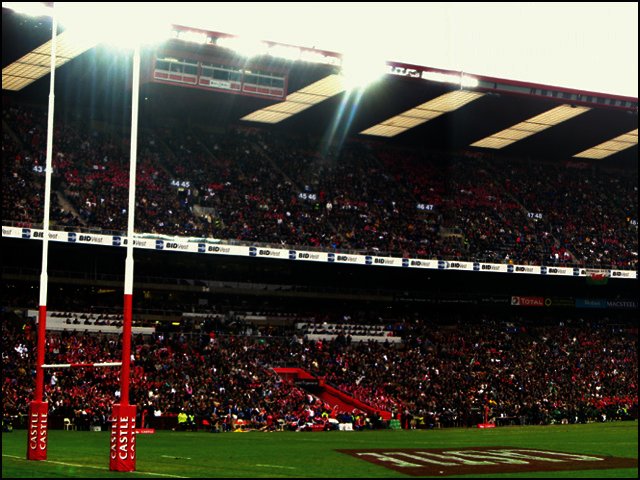What did it take to set up Wi-Fi access for Ellis Park’s main stand in time for the Castle Rugby Championships, where South Africa took on New Zealand? We spoke to Michael Fletcher, sales director sub-Saharan Africa for Ruckus Wireless, and Carel van der Merwe, CEO of WirelessG, to find out more about the challenges involved.
Q: What were the major challenges of the project?
A: The nature of high-density environments, where thousands of users must be simultaneously supported in a confined space, presents a unique set of challenges that conventional, enterprise Wi-Fi systems simply aren’t able to handle.
The requirements for high-density environments run counter to traditional enterprise wireless LAN (WLAN) deployments. Instead of optimising for broad Wi-Fi signal coverage with the fewest number of access points, Wi-Fi networks within stadiums and other high-density environments require large numbers of access points (APs) to get the needed capacity and very high spectral reuse. When large numbers of APs are deployed in close proximity, it can create the potential for interference.
Q: Tell us more about the main equipment used?
A: The Ruckus ZoneFlex 7782-N is the industry’s first 802.11n outdoor access point featuring a 30° narrow beam antenna array along with patented Ruckus BeamFlex technology to deliver additional signal gain. The ZoneFlex 7782-N was specifically designed to address the needs of very high-density deployments such as stadiums, arenas, airports, etc.
These are amongst the most challenging wireless environments imaginable and are ideally suited to Ruckus Smart Wi-Fi technology. High-density best practices usually call for a large number of APs to get the needed capacity, but care must be taken to limit co-channel interference. The narrow beam antenna in the ZoneFlex 7782-N is able to focus radio frequency (RF) energy into a specific area, which greatly reduces the opportunity for interference and increases network performance.
Other equipment components consisted of a Ruckus ZoneDirector controller for centralised management of the APs, multiple switches, a specialised Gateway server and associated software components.
Q: How long did it take to set up the network and how many people were involved?
A: In a period of a month, close to 15 WirelessG project team members including; project manager and developers, Network Operation Centre personnel, network infrastructure engineers and marketing personnel, worked closely alongside the Ruckus team to deliver the first phase of the project (main pavilion), successfully.
Q: Were there any problems experienced during the test?
A: No, the equipment worked properly on the day and the spectators had a great user experience. On a device level, new devices with 5 GHz capability had the best performance and enjoyed the highest speeds. According to tests performed by WirelessG the average speed achieved at the event during peak hours were between 5 and 10 Mbps.
Q: When will the whole project be completed?
A: With the “events-activity-landscape” being relatively inactive for the remainder of the year, we will be utilising the additional time to ensure sound deployment of the first Wi-Fi enabled stadium in South Africa, using Ruckus Smart Wi-Fi technology. We would like to see the entire stadium Wi-Fi enabled within 4 - 6 months.





